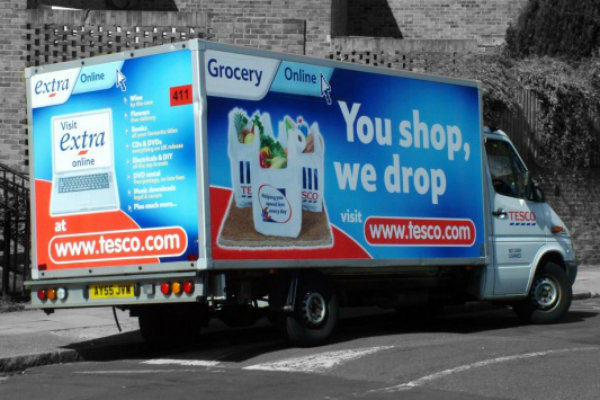The ongoing competition to offer the best delivery rates is all about cutting costs for customers, but how much is it costing retailers?
In recent weeks, more and more retailers have invested in improved delivery services, including same-day-deliveries by names like Amazon. Nigel Doust, Chief Executive of Blackbay, called the process “a vicious cycle”, as stores are forced to compete with each other, and the strain is beginning to show.
A recent study by Management Consultancy Kurt Salmon for Retail Week found that UK supermarkets are losing £3 to £5 per individual home delivery: around £300m per year. Certain chains have responded by raising the minimum cost of home deliveries: Tesco‘s attempt to do so in July led to a wave of anger from customers, who threatened to switch to competitors.
However, LCP Consulting Partner Stuart Higgins argues that supermarkets are a special case, as they have their own employees to pick, pack and deliver goods, as well as their own vans. Additionally, the average variance in goods for a grocery store shop means that a lower number of trips per van is achieved than at more specialised online stores.
At the same time, he added, having to post items through a third party can also be costly for other online retailers. According to Higgins, the average cost of sending a delivery this way is £3 to £3.50, which can lead to a direct loss if the seller provides free shipping on less valuable items, such as individual books or CDs, like Amazon does for its Prime members.
“Online fulfilment is fundamentally more expensive for retailers than fulfilment to store and, as more sales volume goes through the online channel, many, many retailers are suffering margin erosion.”
As the example of Tesco shows, however, retailers are not unaware of these costs, and there are other methods of improving the journey from store shelf to customer. Click-and-collect services are becoming increasingly popular and, like deliveries, can be done on a same-day-basis.
Additionally, a number of experts have claimed that customers simply do not need the delivery options that retailers are fighting each other to provide.
In an earlier report, Higgins said that “Retailers continue to tell us that the future of home delivery is faster and freer… but customers value convenience and consistency.”
He pointed out that Amazon is already struggling to maintain its unlimited delivery service for Prime Members, who just aren‘t using it enough to justify the cost to the website.
It would appear likely that as retailers compete to provide delivery services, simply matching their rivals will cost them more than they can make up from customer spending. As the holiday season approaches, sellers will have to consider whether or not their services are worth the cost.


















